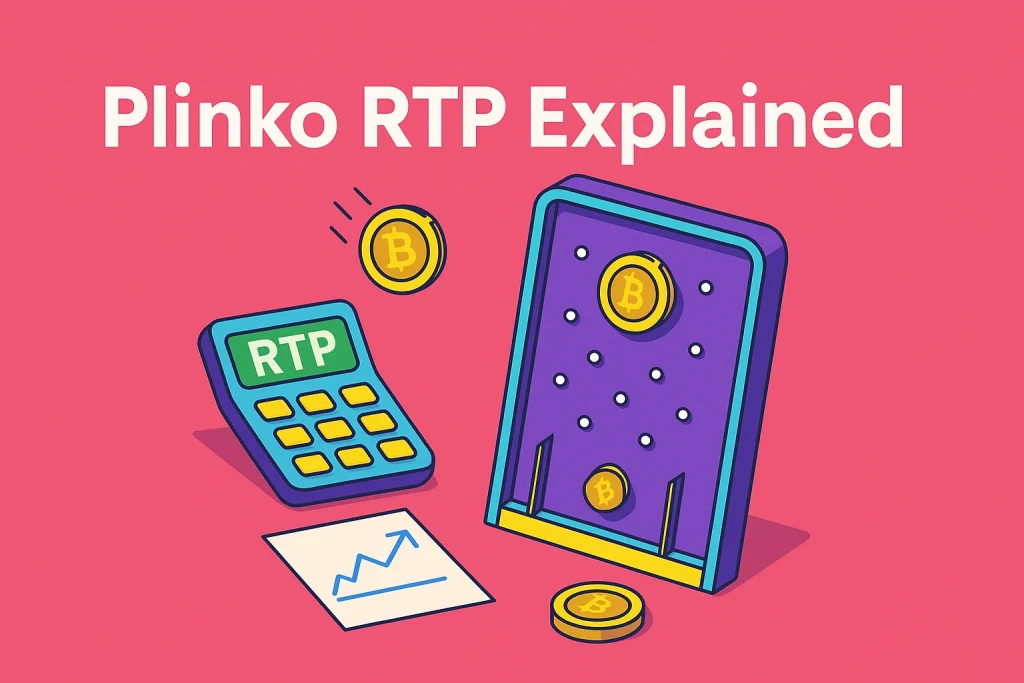When you’re playing Plinko at a crypto casino, it might feel like everything comes down to luck, or how the ball bounces. If you’re still deciding where to play, our best crypto Plinko sites guide lists trusted platforms with the fairest RTP settings and top gameplay options. But behind the scenes, there’s one stat that quietly shapes your entire experience: RTP, or Return to Player.
Understanding what RTP means — and how it changes between versions — can help you make smarter decisions, even in a game that feels purely random.
Let’s walk through what RTP is, how it works in Plinko, and why it matters more than you might think.
What Is RTP and Why Does It Matter in Plinko?
RTP stands for Return to Player. It’s the percentage of total wagers a game is expected to pay back to players over time. If a game has an RTP of 97%, that means — on average — it returns $97 for every $100 wagered.
Now, that doesn’t mean you’ll always get 97% back every session. It’s a long-term average based on thousands (or millions) of plays.
In Plinko, RTP depends on two main factors:
- The number of rows you choose
- The volatility setting, if the version supports it
The more rows you have, the wider the range of possible outcomes — which can stretch the RTP in either direction. And if a game has low/medium/high risk settings, each one can slightly shift the RTP too.

What’s a Good RTP for Plinko?
In most reputable crypto casinos, Plinko’s RTP falls in the 96% to 99% range, depending on your setup.
Here’s a rough breakdown:
- Low rows (8–10): Higher RTP (often above 98%), lower variance
- Medium rows (11–13): Slightly reduced RTP (97–98%), balanced gameplay
- High rows (14–16): Lower RTP (96–97%), much higher volatility
It’s a trade-off. More rows mean higher potential multipliers — but slightly worse long-term odds. The casino edges a bit more, and the game becomes swingier.
That doesn’t mean high-row Plinko is “bad.” It just means you need to approach it differently — with smaller stakes, tighter limits, and a willingness to ride the variance.
How Do Different Plinko Versions Compare?
Just like slots, different developers tweak their own Plinko mechanics. The core gameplay stays the same, but payout charts and RTP settings can vary.
Spribe (Aviator devs)
Spribe’s version is lightweight and often has a fixed RTP around 97%–98%, depending on the number of rows. There are no volatility settings — it’s purely about the board setup.
Good for: simplicity, fast mobile sessions.
BGaming
BGaming lets you adjust risk level (low/medium/high) along with row count. That gives players more flexibility — but also more complexity.
- Low risk → higher RTP (~99%)
- High risk → RTP drops closer to 96%
This version’s strength is control. You can tailor your session to match your tolerance.
SmartSoft (Plinko X)
SmartSoft adds visual flair and animated trails, but their version also plays with volatility behind the scenes. RTP tends to hover around 96.5%–97.5% depending on row depth and settings.
Best for: players who want a more dynamic, polished interface.
Stake Originals (In-house version)
Stake’s own Plinko game is fully provably fair, with RTP up to 99% on lower risk settings and shorter boards. It’s one of the fairest Plinko games on the market when configured conservatively.
Good fit if: you’re already on Stake and prefer transparent mechanics.
How RTP Connects with Your Strategy
If you read our guide to best Plinko strategies, you already know that managing your row count and bet size helps control volatility.
But here’s where RTP fits in:
- Higher RTP gives your balance more room to breathe.
→ You’re losing less over time, even if the gameplay feels slow. - Lower RTP means you’ll need a sharper plan.
→ More variance, fewer returns — but higher ceiling.
So if you’re trying a new version or switching risk modes, check how it affects the game’s payout table. Some providers make that transparent up front; others hide it in help menus.

Can You See Plinko’s RTP Before Playing?
Sometimes. Unfortunately, not every platform is upfront about it.
Here’s how to check:
- Game info panel – look for a small “?” icon or “i” in the corner of the game window
- Provider’s official site – many studios publish RTP specs for all versions
- Community forums or reviews – verified players often share details
- Ask support – if you’re playing with real money, it’s worth knowing
If you can’t find the RTP for a game — especially in crypto — treat that as a red flag. Transparency is key, and any casino that hides odds probably has a reason.
Should You Always Choose the Highest RTP?
Not necessarily.
Sure, a 99% RTP is mathematically better than 96%, but it usually comes with lower volatility — and fewer chances at big multipliers. If you’re playing Plinko for entertainment and chasing that satisfying 1000x drop, you might actually want a setup with lower RTP but bigger variance.
What matters is finding the balance that matches your style.
- Playing short sessions? Go for high RTP, low risk.
- Trying to hit a lucky streak? Accept a lower RTP and stretch your bankroll.
- Want to grind daily rakeback? Pick stable RTP, autoplay, and volume.
There’s no single correct answer — just setups that fit your goals.
Final Thoughts
RTP isn’t the most exciting part of Plinko — but it’s one of the most important. It tells you what to expect over time and helps you choose the right version of the game for your style and budget.
When you combine RTP awareness with proper risk management, your sessions last longer, feel more consistent, and (in the long run) give you better value from every coin you wager.
Want to put this RTP knowledge into action? Explore our recommended crypto Plinko platforms and choose a site that fits your style. Just remember: the ball might bounce randomly, but your setup doesn’t have to be.



